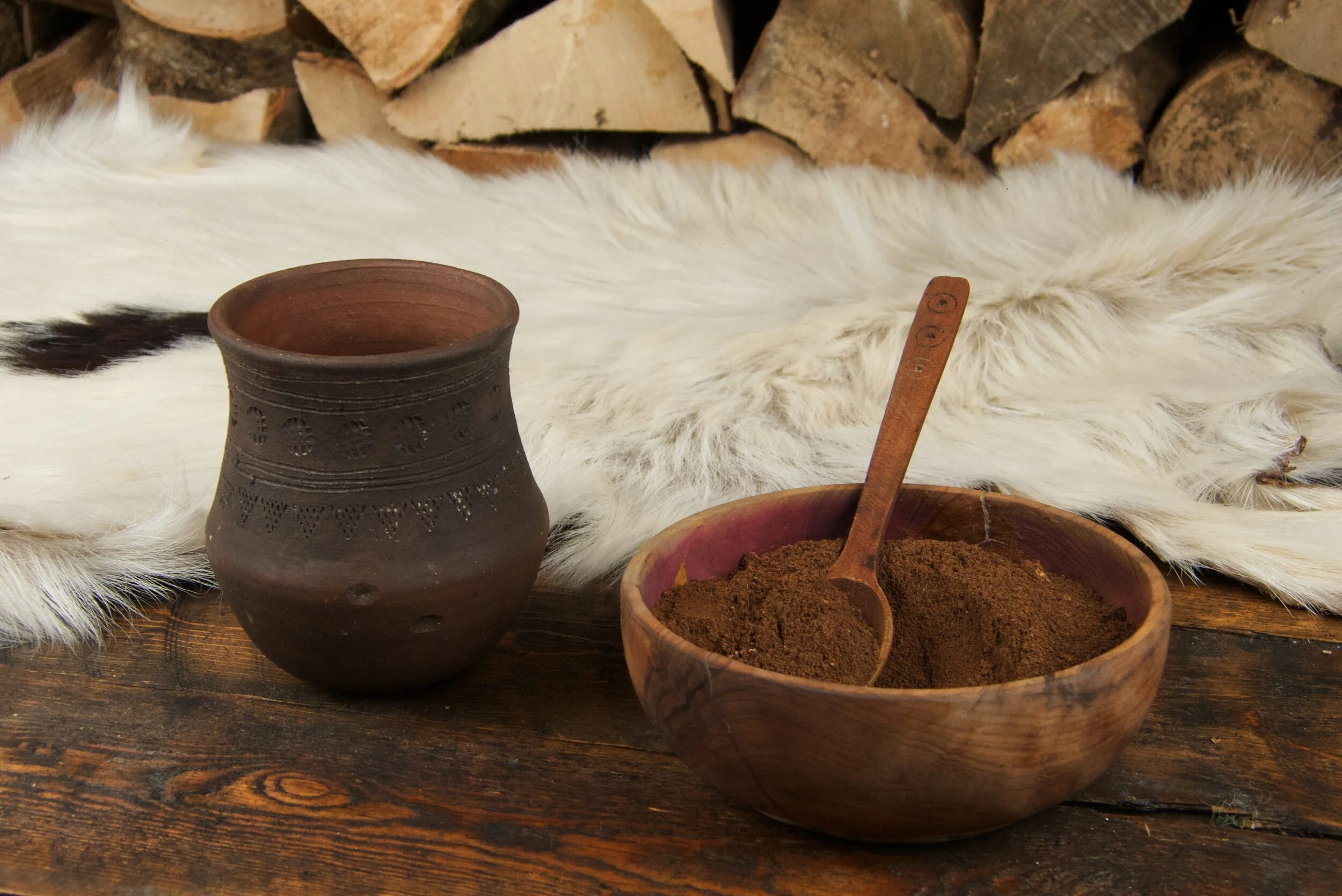Ingredients:
250g Wholemeal bread flour
250g White bread flour
1 tsp Salt
200g Beetroot
200g Starter
300ml Warm water
Method:
Put the flours and salt into a large bowl and mix together. Grate the beetroot and add to the flour, along with the starter. Slowly add the water and mix together to form a dough.
You can add more or less water depending on how your dough feels; I find it
varies slightly every time.
Tip the dough out onto a lightly oiled worktop and knead for 10 minutes.
There are various ways to knead your dough. I like to stretch it out, then roll it back in and give it a 90 degree turn, before stretching it out again.
Put your dough into a lightly oiled bowl and cover loosely with a damp cloth to stop it drying out. Place somewhere warm, I usually put it near our wood-burner.
Leave to prove for several hours until the dough has roughly doubled in size. Sourdough takes longer to develop than bread made with shop bought yeast, but benefits from the extra time, as it develops a better flavour.
Tip your dough back out onto your lightly oiled work surface and carefully deflate it by poking it with your fingers. Reshape by folding in half four times and forming a nice tight ball. Coat with a little flour.
Place it in a lightly greased loaf tin for a square sandwich loaf, or into a floured proving basket, if you have one. Cover loosely with a damp cloth and leave for another hour or more to prove again. If using a tin, it should rise to the top.
Heat your oven to its highest temperature and boil the kettle. If using a proving basket, you will need to place an oven tray in to heat.
Place some hot water in a baking tray at the bottom of the oven, this will help to create a good crust on your loaf. If using the proving basket, tip your bread out onto the hot oven tray, slash the top and get it in the oven and shut the door, as quick as possible, to avoid heat loss. If using a loaf tin, slash the top and put your loaf tin in the centre of the oven.
Cook for 10 minutes before dropping the temperature to 200 degrees if the crust is looking pale, 180 degrees if the crust is noticeably browning, and 170 if it seems to be browning quickly. Cook for a further 40 mins.
When using a loaf tin, I like to take it out of the tin and place the loaf back in the oven for the last 10minutes.
Remove from the oven; the loaf should sound hollow when you tap it on the bottom.
Leave to cool fully before cutting.






